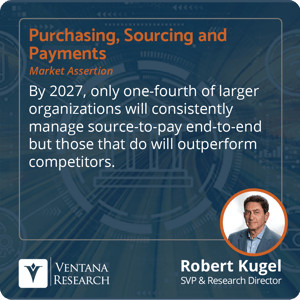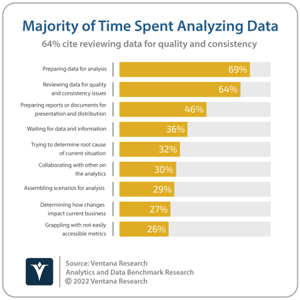In 2015, I began using the term continuous accounting to call attention to technology advances that enable finance and accounting departments to improve performance. These advances have continued, making an even more compelling case for adoption of continuous accounting.
In my definition, the approach rests on three pillars:
- Managing processes end-to-end to reduce workloads, using workflows while ensuring the accuracy of data. The process uses techniques that automate data capture, data movements and data transformations. Doing so eliminates the need for checks, reconciliations and remediation of errors caused by manual interventions.
- Spreading workloads as continuously as possible across the accounting calendar to avoid spikes and provide a better work-life balance for staff.
- Adopting a continuous improvement management approach to adapt to technology that improves departmental performance. Although it is essential to maintain consistency in daily processes and accounting treatments, change is often needed, especially as business conditions, regulation and accounting principles evolve.
Technology continues to advance, strengthening the case for CFOs and controllers to strategically reassess how the department operates and identify ways to improve performance by using practical and affordable technology. Today, finance executives also do this to attract and retain the best talent. And, as technology has evolved, the scope of continuous accounting has expanded. This, in turn, led to two significant changes in the focus areas of research for the Office of Finance practice: creating focus area for Purchasing, Sourcing and Payments and Close, Consolidate and Report.
One important way that technology now enables departments to achieve more is its application to the consolidate, close and report phase of the accounting cycle. Software that automates the full scope of the accounting close,%20(1)-png.png?width=300&height=300&name=Smart_Close_DI_202204_02_Quarter_Close%20(2)%20(1)-png.png) including reconciliations, consolidation and reporting, has grown more capable and affordable over the past five years. By enabling consistent process management that captures best practices and automating rote, repetitive activities to boost staff productivity, these applications enable organizations to shorten the close, make the process more efficient and reduce the risk of material errors by strengthening accounting controls. As accounting departments have learned since 2020, close automation software helps ensure business continuity under any circumstance, especially as performing the close virtually via remote workforces becomes more commonplace.
including reconciliations, consolidation and reporting, has grown more capable and affordable over the past five years. By enabling consistent process management that captures best practices and automating rote, repetitive activities to boost staff productivity, these applications enable organizations to shorten the close, make the process more efficient and reduce the risk of material errors by strengthening accounting controls. As accounting departments have learned since 2020, close automation software helps ensure business continuity under any circumstance, especially as performing the close virtually via remote workforces becomes more commonplace.
Another important benefit of close automation is that it accelerates the process. From its start, the Office of Finance practice has advocated the use of software to shorten the accounting close, with the objective of completing the process within one business week (the generally accepted performance measure) without sacrificing financial statement quality. Unfortunately, our Smart Close Dynamic Insights revealed that just 40% of organizations are able to do this, while one in five take three or more weeks.
The value achieved through end-to-end process automation, including a straight-through approach to data management, is one reason why Purchasing, Sourcing and Payments is now a focus area. Software can streamline methods, especially those that cross functional silos, shorten cycles, reduce unnecessary costs, provide greater visibility into cash flows, increase control and improve results. Digitizing operations helps the department staff spend less time on mechanical, repetitive tasks to focus on areas where their experience, skills and judgment are best put to use. Organizations often use some technology to improve the execution of source-to-pay or order-to-cash processes, but too few have implemented a full, end-to-end application of technology necessary to achieve all of the benefits. Ventana Research asserts that by 2027, only one-fourth of larger organizations will consistently manage source-to-pay end-to-end, but those that do will outperform competitors.
There are two instances where technology will continue to expand the scope of continuous accounting: Artificial intelligence, and a data fabric approach to data management that I call the “data pantry.” AI will enable finance and  accounting departments to do more faster and with less effort and less risk. AI will be an increasingly important feature of business software through the end of this decade. Ventana Research asserts that by 2026, almost all vendors of software designed for finance organizations will incorporate AI capabilities to reduce workloads and improve performance.
accounting departments to do more faster and with less effort and less risk. AI will be an increasingly important feature of business software through the end of this decade. Ventana Research asserts that by 2026, almost all vendors of software designed for finance organizations will incorporate AI capabilities to reduce workloads and improve performance.
AI’s potential for increasing efficiency or enhancing performance is vast. AI is already at work in areas like fraud detection, and other tasks will be available shortly. Additional use cases are highly speculative or will be practical at some undetermined time. I wrote about five well-within-reach use cases for business-focused AI capabilities last year, which you can find here. Briefly, these are:
- Accelerating forecasting and planning while reducing bias.
- Automating analytics production to enable more time for analysis and thought.
- Providing task supervision to spot data and information input errors.
- Adding recommendations to facilitate decision-making.
- Automating commentary to enhance reporting.
A second area of technology innovation that will be consequential for a wider adoption of continuous accounting is the increasing incorporation of data fabric by software vendors. We use the term data pantry in referring to  data fabric to emphasize the need for data architects to pay close attention to the user experience and simplify their ability to work with the data. Having data from all relevant source systems immediately available also facilitates any kind of end-to-end process management because it ensures data integrity as processes cross silos and systems. Easy availability of necessary data also supports processes through analysis and reporting. This substantially reduces the amount of time business analysts and planning professionals spend on data preparation activities. The data pantry addresses long-standing issues that routinely sap the productivity of finance and business analysts and other users of business data. Our Analytics and Data Benchmark Research finds that 69% of organizations say preparing data is one of the most time-consuming aspects of analyzing data, along with 64% that say reviewing data for quality and consistency is also an issue.
data fabric to emphasize the need for data architects to pay close attention to the user experience and simplify their ability to work with the data. Having data from all relevant source systems immediately available also facilitates any kind of end-to-end process management because it ensures data integrity as processes cross silos and systems. Easy availability of necessary data also supports processes through analysis and reporting. This substantially reduces the amount of time business analysts and planning professionals spend on data preparation activities. The data pantry addresses long-standing issues that routinely sap the productivity of finance and business analysts and other users of business data. Our Analytics and Data Benchmark Research finds that 69% of organizations say preparing data is one of the most time-consuming aspects of analyzing data, along with 64% that say reviewing data for quality and consistency is also an issue.
I recommend that CFOs and controllers adopt a strategic, continuous accounting approach to their departmental systems and operations. Technology can be a catalyst for change that improves organizational performance and not just a means of increasing efficiency. The accelerated adoption of digital systems to address the challenges of lockdowns by promoting resiliency and supporting hybrid and remote work continue to provide benefits. Taking technology to the next level and using it to reshape how work is done can multiply the effectiveness of the finance and accounting staff and enable the department to attract and retain the best people.
Regards,
Robert Kugel

%20(1)-png.png?width=300&height=300&name=Smart_Close_DI_202204_02_Quarter_Close%20(2)%20(1)-png.png) including reconciliations, consolidation and reporting, has grown more capable and affordable over the past five years. By enabling consistent process management that captures best practices and automating rote, repetitive activities to boost staff productivity, these applications enable organizations to shorten the close, make the process more efficient and reduce the risk of material errors by strengthening accounting controls. As accounting departments have learned since 2020, close automation software helps ensure business continuity under any circumstance, especially as performing the close virtually via remote workforces becomes more commonplace.
including reconciliations, consolidation and reporting, has grown more capable and affordable over the past five years. By enabling consistent process management that captures best practices and automating rote, repetitive activities to boost staff productivity, these applications enable organizations to shorten the close, make the process more efficient and reduce the risk of material errors by strengthening accounting controls. As accounting departments have learned since 2020, close automation software helps ensure business continuity under any circumstance, especially as performing the close virtually via remote workforces becomes more commonplace. accounting departments to do more faster and with less effort and less risk. AI will be an increasingly important feature of business software through the end of this decade. Ventana Research asserts that by 2026, almost all vendors of software designed for finance organizations will incorporate AI capabilities to reduce workloads and improve performance.
accounting departments to do more faster and with less effort and less risk. AI will be an increasingly important feature of business software through the end of this decade. Ventana Research asserts that by 2026, almost all vendors of software designed for finance organizations will incorporate AI capabilities to reduce workloads and improve performance. data fabric to emphasize the need for data architects to pay close attention to the user experience and simplify their ability to work with the data. Having data from all relevant source systems immediately available also facilitates any kind of end-to-end process management because it ensures data integrity as processes cross silos and systems. Easy availability of necessary data also supports processes through
data fabric to emphasize the need for data architects to pay close attention to the user experience and simplify their ability to work with the data. Having data from all relevant source systems immediately available also facilitates any kind of end-to-end process management because it ensures data integrity as processes cross silos and systems. Easy availability of necessary data also supports processes through 








